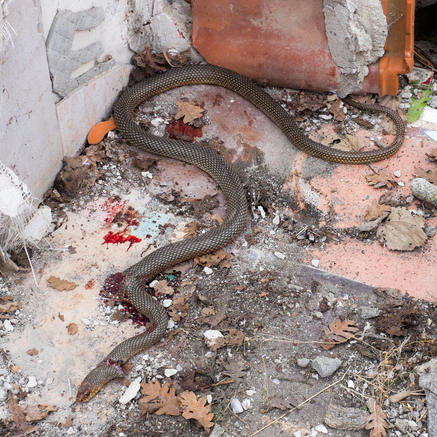06.D.02 Transporting and handling hot substances.
- Runways or passageways, clear of obstructions, must be provided for all persons carrying hot substances.
- Hot substances must not be carried up or down ladders.
- When hoists are used to raise or lower hot substances, attention must be given to assuring that the hoisting mechanism is adequate for the loads imposed and is securely braced and anchored.
- All persons handling hot substances must be provided protection against contact with, or exposure to radiant heat, glare, fumes, and vapors of the substances. At a minimum, roofers handling roofing materials must be fully clothed including long sleeved shirts, shoes secured and at least 6 in (15 cm) in height, and gloves up to the wrist. See Section 5.
- Containers for handling and transporting hot substances must be of substantial construction (minimum 24-gauge sheet steel), free from any soldered joints or attachments, and must notbe filled higher than 4 in (10.1 cm) from the top.
- Piping used to transport hot substances must have an entry and exit shut off valve and must be made of flexible metallic hoses fitted with insulated handles. In cold climates, piping must be insulated to prevent material from solidifying on the inside of the pipe.
06.E Harmful Plants, Animals and Insects.
06.E.01
Protection against hazards from insects and/or animals harboring fleas or disease-carrying insects must include, as applicable, the following:
- PPE such as netted hoods, leather work gloves, and high-top work boots worn in conjunction with trousers and long-sleeved shirts;
- Clothing treated at the factory with DEET or Permethrin are recommended in areas of high insect population;
- Drainage or spraying of breeding areas;
- Destroying or flagging (marking as hazard) of nests;
- Smudge pots and aerosols for protecting workers and small areas;
- Elimination of actions or conditions that propagate insects or vermin;
- Extermination measures by a certified pesticide applicator or, for over the counter items, following the instructions on the label;
- Approved first aid procedures for employees; employees allergic to bee stings must be encouraged to self identify to the supervisor and to carry an EpiPen;
- Inoculation against diseases known to be a local hazard; and
- Instruction in recognition of the animals and insects and their common nesting habits, aggressiveness, etc.
06.E.02
In areas where there is exposure to poisonous snakes or lizards, employees must be required to:
- Wear snake chaps or knee-high snake boots worn in conjunction with trousers and long-sleeved shirts;
- Be trained in recognition of the snakes and their common nesting habits, aggressiveness, etc.; and
- Be trained in the proper first aid procedures for bites.
06.E.03
In areas where employees are exposed to poisonous plants, the following protective measures, as applicable, must be provided:
- Removal or destruction of plants, where practical;
- Appropriate protective clothing such as gloves;
- Protective ointments;
- Soap and water for washing exposed parts; and
- Instruction in recognition and identification of the plants.
06.E.04 When burning poisonous plants, controls must be instituted to prevent contact with or inhalation of toxic elements contained in the smoke.
Knowledge Check Choose the best answer for the question.
6-8. At a minimum, roofers handling roofing materials must be fully clothed including long sleeved shirts, shoes secured and at least _____ in height, and gloves up to the _____.
You forgot to answer the question!

